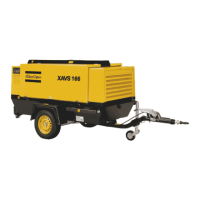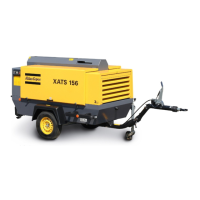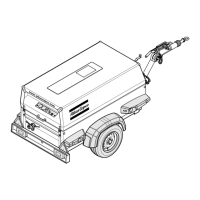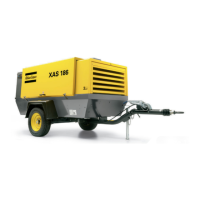- 21 -
If the air consumption is equal to or exceeds the
maximum air output, the engine speed is held at
maximum load speed and the unloading valve is fully
open.
If the air consumption is less than the maximum air
output, the regulating valve supplies control air to
unloader valve (UV) to reduce the air output and
holds air receiver pressure between the normal
working pressure and the corresponding unloading
pressure at approx. 1.5 bar (22 psi) above the normal
working pressure.
When the air consumption is resumed, the blow off
valve (BOV) closes and the unloader valve (UV)
gradually opens the air intake and the electronic speed
control increases the engine speed.
The construction of the regulating valve (RV) is such
that any increase (decrease) of the air receiver
pressure above the pre-set valve opening pressure
results in a proportional increase (decrease) of the
control pressure to the unloading valve and the
electronic speed control.
Part of the control air is vented into the atmosphere,
and any condensate discharged, through the vent
holes (VH).
EXHAUST GAS AFTER TREATMENT
In order to comply with Emission legislations for
EPA Tier 4I / EU Stage IIIB, the engine is equipped
with an exhaust after treatment system.
The exhaust system of the units XAHS 146, XATS
156 and XAS 186 is equipped with a Diesel Oxidation
Catalyst (DOC).
The exhaust system of the units XAVS 166 and
XAHS 186 is equipped with a Diesel Oxidation
Catalyst (DOC) and a Diesel Particulate Filter (DPF).
For trouble free functioning of the Diesel Oxidation
Catalyst (DOC) an average exhaust gas temperature
of 250°C is required.
Diesel Oxidation Catalyst (DOC)
The function of the DOC is:
• Reduction of CO and HC emissions
• Reduction of Particle Matter (PM)
• Oxidation of NO into NO2
• Catalytic burner for after treatment downstream
Diesel Particulate Filter (DPF)
The function of the DPF is:
• filtering the exhaust gas, filtration efficiency
>99%
• burning of soot (regeneration phase)
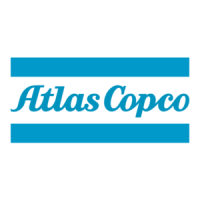
